Catalogue and magic properties of the stone -->rus
Carbon DIAMOND carbonado
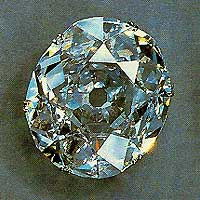 Description characteristic of the mineral.
Description characteristic of the mineral.
Native crystal carbon (he is formed in the earth's crust in the place of falling of large meteorite under influence instantaneous high-pressure and temperatures). An ideal carbon diamond is colourless and transparent, but can be yellow, green, blue, dark blue, smoke-coloured-brown, mauve, milky- white, grey and black. It is painted in black, yellow, gold, brown, blue color, but for jeweller industry used more frequent than all colourless transparent or blue carbon diamond. In XX century carbon diamonds began widely to synthesize, mainly for industrial needs. A carbon diamond is name the cut carbon diamond of jeweller quality. The bulk of extractive carbon diamonds is made by unjeweller technical stone, only the stakes of percent are suitable for jeweller treatment. For measuring of weight of diamonds a metrical carat - 0,2 gramme or 200 milligrams is accepted. Diamonds carbonado by mass more than 15 carats is rareness, by mass in hundreds of carats is the greatest rareness. To the present tense in the world of known only 26 diamonds primary mass of which exceeded 400 carats. Such stone are got by the proper names, world fame and durable place in history.
At the correctly cut carbon diamond a "game" is the showiest property: it crushes white light on the brightest spectral-clean sparks, take wing and by a fan scatterings round the cut core. It property of carbon diamond is related to that the index of his refraction sharply differentiates for the rays of visible light with a different wave-length. It decomposes a white ray like an optical prism on the going away a fan rays of all of flowers of spectrum. Ogranenyy a diamond seems more flat, than am actually.
Basis of carbon diamond is made by the atoms of clean carbon, existing deeply under earth, exposed to the strong heating and pressure during the milliards of years. In time, under constraint and at a high temperature, as a result of volcanic explosion on-the-spot earth rocks and diamonds appeared in rocky rocks. An explosion generated a deep and wide cavity which is named kimberlite tube; such beds of diamonds are known as primary beds. Washed down other carbon diamonds water as a result of erosion of soil are diamond mineral mine deposits. Such beds meet in many corners of the world, but the greatest large industrial mine deposits supplies are concentrated in Angola, Australia, Botswana, Namibia, Republic of south Africa, Russia and Zaire, where obtain all of 80% diamonds of the world. The first beds of diamonds appeared on-the-spot earth approximately 2,5 milliard of years back. To the most fresh mine deposits of carbonado diamonds from force 50 million years. The certain amount of ballases appeared at a blow at earth of meteorite.
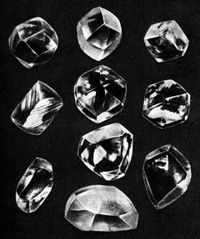 It is necessary to extract and sift 250 tons ores in an order to get a 1 carat of natural diamonds. At cutting a brait loses 40%-60% of the weight, and it means that over all of efforts brought to the booty 0,5 carat of the cut diamonds which you and see on the counters of jeweller shops. For a certificate - it, for example, one whole Diamond by a diameter 5,25 mm or 16 diamonds by a diameter for 2 mm. It is needed also to take into account, what only fourth part of all of natural diamonds is suitable for cutting of diamond (that it is average needed to sift 1000 tons ores).
It is necessary to extract and sift 250 tons ores in an order to get a 1 carat of natural diamonds. At cutting a brait loses 40%-60% of the weight, and it means that over all of efforts brought to the booty 0,5 carat of the cut diamonds which you and see on the counters of jeweller shops. For a certificate - it, for example, one whole Diamond by a diameter 5,25 mm or 16 diamonds by a diameter for 2 mm. It is needed also to take into account, what only fourth part of all of natural diamonds is suitable for cutting of diamond (that it is average needed to sift 1000 tons ores).
Quite colourless diamonds in nature are enough rare. Usually they have some tint (colors). There are also the intensively painted diamonds of yellow, orange, green, blue, dark blue, rose, brown, milky-white, grey, black color. Colouring of diamonds is related to the different imperfectly-admixture centers in the structure of crystals, and sometimes - with including of row of minerals. The most widespread yellow colouring can have a different origin.
Diamond carbon - jewels color stones of A-one. However much his strong brilliance and "game" come to light only after treatment. A diamond carbon has an anisotropy of solidity, expressed in that on different verges and in different directions solidity a few differs. Diamond carbonado process to on the least antiwear, wearproof directions. At the correct cutting of carbon diamond the wide world, falling on him through a crown, is fully reflected from the verges of pavilion. To view of diamond an only one luminous point is on light visible in colette. From a complete internal reflection it is impossible nothing to see through Diamond, it is an index of cutting rightness. The high index of refraction of diamond to view of him through a ground creates an illusion considerably less thickness of stone, what it is actually.
Diamond carbon at ordinary temperatures chemically inert. Acids, the even strongest, on him does not operate. At high temperatures a diamond acquires chemical activity. Diamond carbon does not moisten water, but sticks to fatty mixtures. On property of diamond to moisten fats the "Diamond carbon pencil", supplied the felt end and tucked in the special fatty inks which abandon a continuous line on-the-spot diamond and dotted, is based - on most imitations high-performance (higher 1,8) refraction. Heat conductivity of diamond exceeds heat conductivity of imitations in oftentimes. A reliable method of authentication of diamonds is a key-in through him of transparent. Diamond carbon, unlike most, synthetic stone and glasses minerals, fully transparent and invisible in transparent.
Today diamonds carbons imitate of the fianites successfully (by cube zircons, oxides of zirconium). It is needed to remember that not only diamonds scratch glass (glass is also scratched by topazs, Corundums and crystals of quartz). Attention! Unlike imitations and synthetic substitutes at the cut diamond sharp ribs and corners, and at fianite and other imitators they chamfered. In addition, synthetic fianites (zircons) perceptibly heavier than diamonds.
Magic properties of stone.
To the proprietor a diamond is provided by bravery, ability to overcome all of barriers and win enemies, invincibility in a fight, unshakableness, and also guards his body from any damages from outside. However related all of positive qualities of diamond are to that a proprietor must be honest, and if it is a people of other storage, stone necessarily will bring him the lots of troubles. Therefore legends and historical certificates are almost always told that the largest and known stone are diamonds or already cut diamonds - "bloody" ways passed to the glory. Diamonds (diamonds) often carried as guard yet and in an order to avoid the attack of wild beasts, especially in trips. Diamond protected the proprietor from depression, bad mood, siderations of fury and anger, lasciviousness and sensuality.
Diamond carbonado possesses in a number of interesting properties: it , for example, begins to shine, if on a crystal to influence the directed ultraviolet or cathode radiation. His power radiation, his veritable color - deep dark blue, therefore he is used in treatment dark blue by light/color in colors-therapeutics.
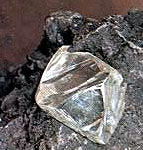
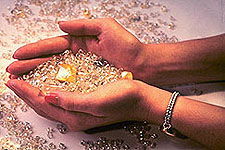
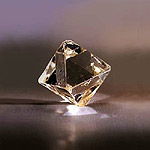
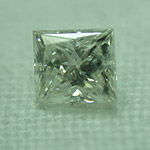
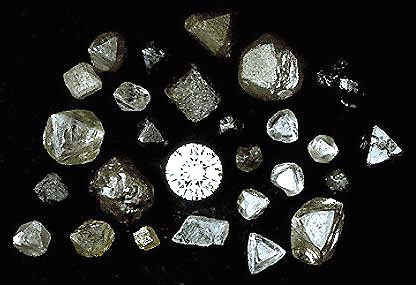

Poisonous and radioactive risky hazardous cargo stone and minerals
** - are poisonous stone and minerals (mandatory verification is in the chemical analysis laboratory + on toxicity)
** - are radioactive stone and minerals (mandatory verification on a regular dosimeter + prohibition on the opened sales in the case of radio-activity over 24 milliroentgens / hour + additional measures of protection of people)
All of rare stone are subject obligatory verification on a regular dosimeter on the possible level of radiation and in a chemical laboratory on absence default of poisonous and evaporating components, dangerous for a human people and environment nature
- Free download article Very dangerous and potentially dangerous stone and minerals are in Medical stone therapeutics, with pictures, 2010 year, format of PDF, 2.80 Mb (Presentation from scientific of author K.305 of pictures of very dangerous and potentially dangerous natural stone and minerals which on a bad motive or criminal indifference can be illegally used in criminal and "underground" "Medical stone therapeutics"). Rus langv.
A catalogue of stone is all of stone in alphabetical order
- Signs of travelling traffic lane markings - to transportation and marking of dangerous load Policy Rules
- Rules of Road Transportation of Especially Dangerous Loads, Hazardous cargo commodity, signs index plate
